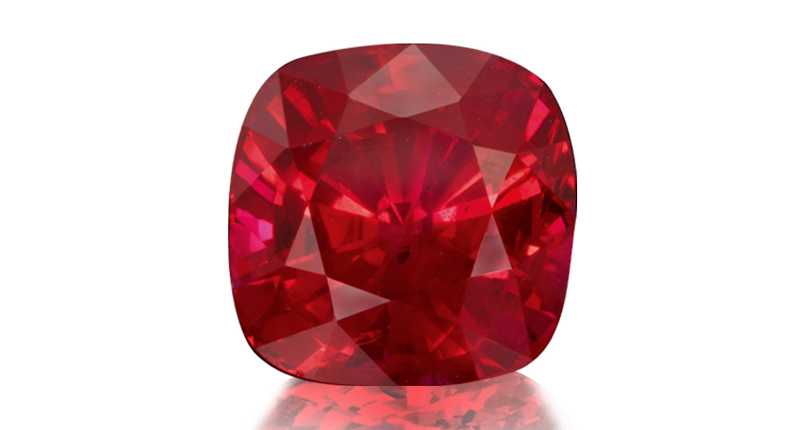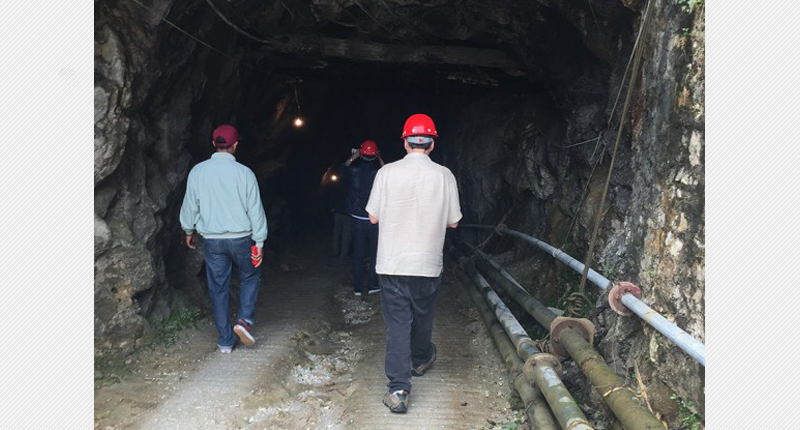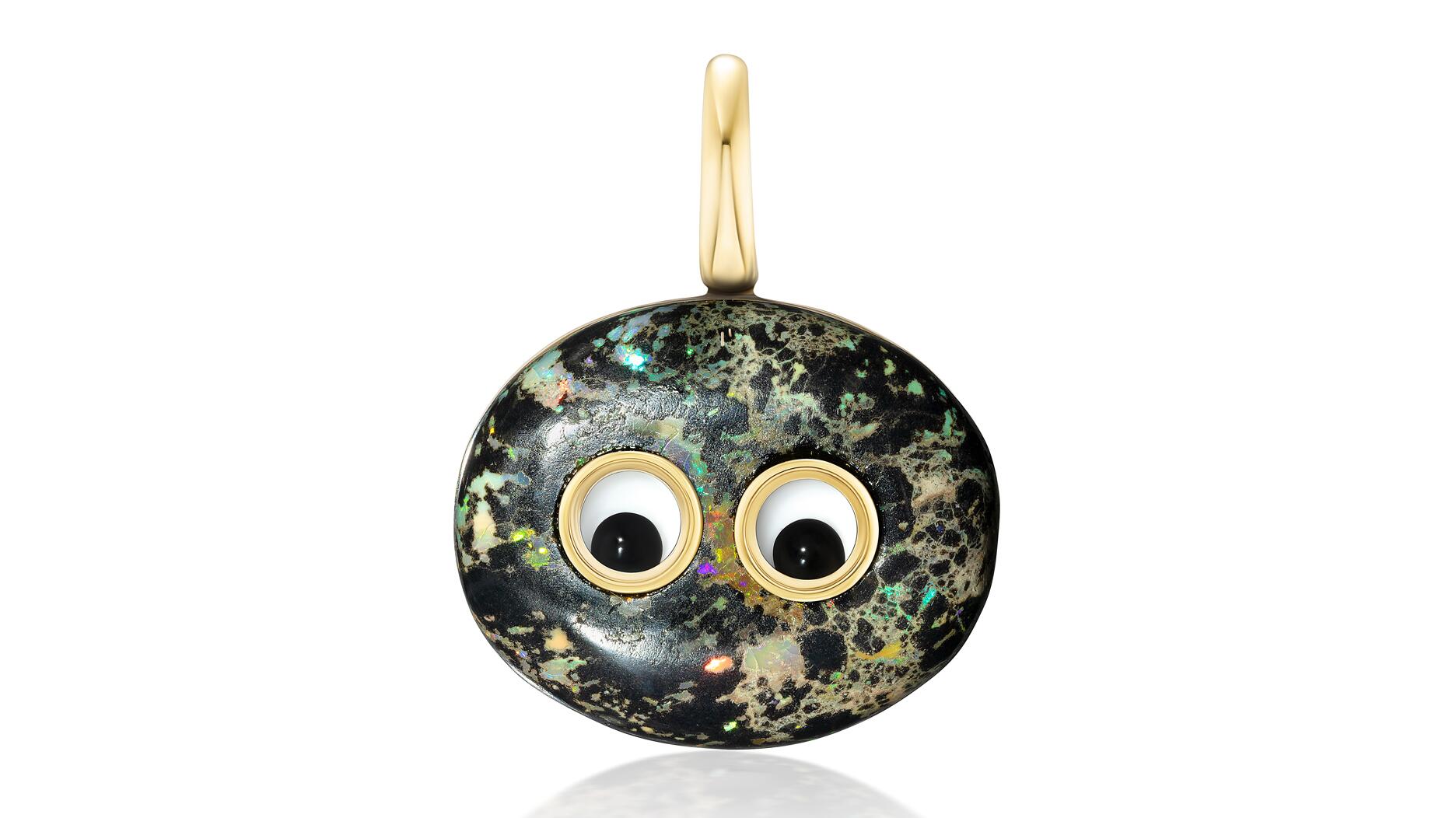As part of the leadership transition, Sherry Smith will take on the role of vice president of coaching strategy and development.
5 Things to Know About … Burmese Rubies
Senior Editor Brecken Branstrator details a few interesting facts about the stones, which have been allowed back into the U.S. for the first time in nearly a decade.

For my first “5 Things to Know About…” blog post, I chose these stones because they are topical, with the lift of the remaining sanctions and the likelihood that they will be at the upcoming gems shows in Tucson for the first time in a while.
I, for one, hope I can get my hands on at least a few while I’m out in the desert.
In the meantime, here’s are five facts about the gemstones pulled together with the help of a number of experts.
1. The color of fine Burmese rubies comes a result of two factors. According to “Ruby & Sapphire: A Gemologist’s Guide” by Richard Hughes, the first factor is a combination of the slightly bluish-red body color of the gemstone and the “purer” red fluorescent emission, which work together to give the gemstone its high-intensity color.
The second is the presence of “silk”--tiny inclusions scatter light onto “facets that would otherwise be extinct,” giving the color a softness and greater dispersion across the gem’s face.
And while rubies from other sources also can possess the strong red fluorescence and “silk” comparable to those sourced in Myanmar (formerly known as Burma), it’s the particular combination of “fine color … and facetable material (i.e., internally clean)” that puts Burmese rubies at the top.
2. Burmese rubies are much younger than those from East Africa. This is actually true for all rubies created by the collision of the Indian subcontinent with the Asian continent.
During certain times in history, tectonic movement has resulted in large-scale shifts in the Earth’s surface, resulting in mineral formation and creating regions called orogenic belts. A lot of the finest ruby and sapphire mines fall into such zones, according to Hughes’ book.
The Pan-African orogeny happened about 750 to 450 million years ago, the result of which created gem deposits in Kenya, Tanzania, Mozambique, Madagascar, Sri Lanka and southern India.

Meanwhile, the activity that resulted in the Himalayan region--the Indian subcontinent colliding with the Asian continent--occurred “just” 45 to 5 million years ago. This created ruby and sapphire deposits from Afghanistan and Tajikistan through Pakistan, northern India, Nepal and Myanmar, and onward to China and Vietnam.
Though there currently is no easy way to age-date rubies, Hughes said if we could, it would provide a method for separating Himalayan rubies from those sourced in East Africa and Sri Lanka.
3. There isn’t a great deal of fine quality rubies coming out of Burma right now. Most of the alluvial deposits in the Mogok region are mined out, according to Hughes.
He said the best gemstones come from alluvial deposits because millions of years of weathering naturally removes the impure cracked portions, which leaves behind the purest part of the crystal.
But now, without the alluvial sources, mining increasingly involves hard rock, which has lower yields and keeps production low.
In a blog post published shortly after the ban was officially lifted in October, Omi Gems also noted that even while the ban was in place in the U.S., Burmese rubies still were being exported to other countries but “supply was still not meeting that (high) demand.” This means that there’s no great supply ready to be sent to the U.S., Omi added, and that prices are likely to remain high.
4. Burmese rubies can be compared to fine rubies from Mozambique. While there are a lot of great rubies coming from other sources, it was the discovery of the fine stones from Mozambique in the late 2000s that made a great splash in the gem world, especially given the ban on Burmese material.
Where a strong presence of iron gives many other sources a slightly brownish hue, the material from Mozambique varies in iron content, so its rubies can have a fluorescence and color hues in similar to the classic colors of Burmese rubies, according to gemologist Richard Wise’s “Secrets of the Gem Trade (Second Edition).”
In his book, Wise wrote that he has seen several stones from Mozambique that “rival, in hue, saturation the best Burma has to offer.”
This is good news for the industry given that there’s so little coming out of Myanmar right now, as mentioned before, and as Mozambique rubies today make up a large part of what’s on the market.
Wise, in fact, estimates that about 85 percent of the ruby market today is made up of Mozambican goods.
And as production from Myanmar continues to decrease--assuming the supply of Mozambican rubies remains strong--he price gap between Burmese and African rubies likely will continue to get smaller.

5. The conflict surrounding Burmese rubies has changed. The U.S. declared a “national emergency” with respect to the Burmese military’s rise to power in 1997 and started to impose sanctions on the country a short time later.
The U.S. government then specifically targeted the import of gemstones with the Tom Lantos Block Burmese JADE (Junta’s Anti-Democratic Efforts) Act of 2008, noting the human rights violations of the ruling regime and how it was evading sanctions by concealing gemstone origins to continue their export to the U.S.
Now, as we all know, the remainder of those sanctions have been lifted and rubies can once again be shipped into the country.
In October, leaders from the American Gem Trade Association and Jewelers of America took a trip to Myanmar to discuss trade between countries. While they were there, the group traveled to Mogok, the center of the gemstone trade in Myanmar and traditionally the source for the best rubies, to visit mines and with miners and dealers.
The AGTA has since released a report on its findings and the recommendations the delegation is making to officials of Myanmar.
The report states that “most of Myanmar’s rubies are in conflict-free zones, with the exception of small deposits in Mongshu in Shan State.”
Thus, the safety of workers, mine operators and prospectors, is greater and the “likelihood of indirectly funding armed conflict is less,” the report states.
(This is, of course, looking specifically at rubies in Myanmar. Jade and the problems surrounding it are a separate issue.)
Still, the AGTA hade made recommendations to the country’s officials on how to make their gemstone industry more transparent and develop it--including separating jade from other gemstones when it comes to licenses and regulations--and will continue to help it develop in the future.
The Latest

It marks the third time the country has headed the Kimberley Process. Ghana will serve as vice chair.

The new Bulova x Stetson designs highlight two animals often associated with the American West—the bison and the Texas Longhorn.

How Jewelers of America’s 20 Under 40 are leading to ensure a brighter future for the jewelry industry.

Its residency at Yamron Jewelers will run through May 2026.


From influential executives to innovative designers, we pay tribute to the people we said goodbye to this year.

The retailer is expanding into areas with large Indian and South Asian populations.

Roseco’s 704-page catalog showcases new lab-grown diamonds, findings, tools & more—available in print or interactive digital editions.

The Italian brand has opened its first flagship amid the peaks of the Dolomites in Madonna di Campiglio, Italy.

The new curation at the Natural History Museum of Los Angeles County showcases rare gem and mineral specimens in their uncut, natural state.

The couple pleaded guilty to concealing at least $127 million in cash transactions at its precious metals businesses.

Consumers shared concerns about prices, inflation, tariffs, trade, and politics in the survey’s write-in response section.

In February 2026, the auction house will move its headquarters to the former Steinway Hall, a neoclassical landmark on Billionaires’ Row.

The new show will take place Jan. 23-25, 2026.

The former BHP Billiton leader and Gemfields chairman is remembered for his influential leadership throughout his 50-year mining career.

The LVMH-owned brand has partnered with the costume design union to revamp its award for 2026.

The luxury titan inked a deal to acquire an initial minority stake in the jewelry manufacturer with a pathway to full ownership by 2032.

The company’s curation of unsigned vintage and estate jewelry debuted at the Bloomingdale’s in Costa Mesa, California.

In the recent multi-shipment seizure, CBP also found counterfeit Audemars Piguet, Moncler, and Chrome Hearts items.

Jewelers of America execs and National Jeweler editors discuss tariffs, the sky-high gold price, and the engagement that broke the internet.

The luxury goods company said founder Ippolita Rostagno will remain at the brand’s helm.

Laura Burdese, who joined the Italian luxury brand in 2022, will take on the role in July.

Need a gift for the cat lover who has everything? Look no further than our latest Piece of the Week.

It purchased the “Grosse Pièce,” an ultra-complicated Audemars Piguet pocket watch from the ‘20s, for a record-breaking price at Sotheby’s.

The lab-grown diamond grower now offers custom engagement and fashion jewelry through its Kira Custom Lab Jewelry service.

Chandler got his start at Michelson Jewelers and has served as DCA president and CEO since 2001. He will retire at the end of the month.

The boutique is slated to open this week inside Terminal 8, offering pre-owned Rolex watches and more to international travelers.



























